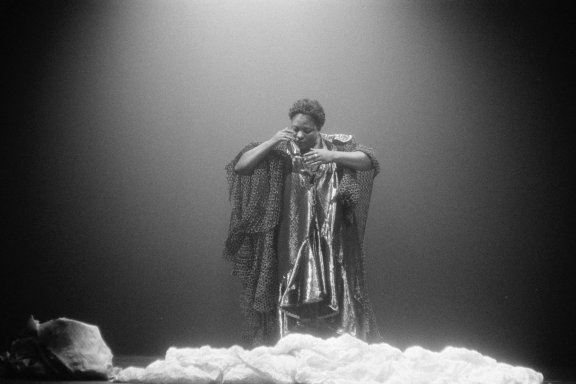1.10.21 — 14:30
CN D à Pantin
14:30 — 1h.
Talk with Susan Buirge (Japan) and Elsa Wolliaston (France) led by Benoît Bardy
15:45 — 50 min.
Dance and ritual(s) in the films by Carlos Saura: la trilogía flamenca [Bodas de sangre (1981), Carmen (1983), El amor brujo (1986)] and Salomé (2002) – reflections on the flamenco gaze
by Gabriel Doménech González (Spain) and Inès Guégo Rivalan (France)
Carlos Saura’s movies about flamenco dance are quite interesting when it comes to question the invention of a “ritual” of the dance. Our paper is articulated around four films – the flamenco trilogy (Bodas de sangre, 1981, Carmen, 1983, El amor brujo, 1986), and Salomé (2002) – and we will study how the dancers appear during the dance, but also backstage, during the rituals preceding the show, when the dancer prepares for their entrance. Follow- ing the filmmaker’s gaze, we’ll analyze the role of the actor, the ritual – its mechanisms, how it is sometimes subverted – and the visual construction. We’ll interrogate how the dance is prepared (during warm-up), and the feelings expressed by the dancers (in their attitudes, their facial expressions, the way they talk during interviews...). Finally, we’ll try to show how rituals as well as flamenco dance are constructed in the works of Carlos Saura, in order to examine how his works contribute to the performativity of this dance.
16:45 — 45 min.
A lecture and performance open to all
"Making a listening and overflowing dance: Arrangements, Spaces and Gestures of (Dis)Belonging among Qaderi Dervish Women in Tehran".
by Kamnoush Khosrovani (France)
with Kaveh Hedayatifar
This lecture-performance proposes to experience on an individual and collective level the (un)covering gestures underpinning the dances of the Sufi women of the qâdéri lineage in Teheran: by reproducing a zikr sequence (the highly codified and sensory weekly ceremony of the qâdéris), Kamnoush Khosrovani opens a reflection on the dynamics of (in)visibility of the bodies of the female participants correlated by that ritual, and on the inventive and sensory resources that it inspires in the dancers.
17:45 — 1h.
Retracing an imaginary ritual: from Indian worship Kalam Eruttu, to a contemporary creation – Kalam/Terre
by Michel Lestréhan (France), Brigitte Prost (France), Haridas Kurupp (India)
Michel Lestréhan will give a paper on the evolution process from the Kalam Eruttu ritual to the piece entitled Kalam/Terre; meanwhile the creation of the mandala will be livestreamed by Shankar Lestréhan. Starting from the context in which the ritual is performed. It will provide a comprehensive theoretical perspective of the subversions, transfers and hybridizing processes at work in the creation of the ritual, as well as their implications and consequences. It will explain how he transposed several phases of the ritual in order to experiment with the cyclical unfolding of time and space to evoke the carnal magnificence and its inexorable end, the ephemeral blossoming of beauty, which wanes and dies.
18:45 — 30 min.
Rituals in Circle the mountain by Anna Halprin
by Luna Paese (Italy, France)
Anna Halprin defines Circle the Mountain, created in 1985, as a dance ritual, and describes the ritual as something “made with a real-life purpose”. The differences between a performance and a ritual are the intentions of the participants, as well as to whom it is addressed. The spectator (in the theatrical sense) is therefore replaced by a “witness, who understands and supports the goal of the ritual”. Through the analysis of archive documents and video clips from Circle the Mountain, our purpose is to delineate the particularities of this dance, while considering the use of space, the number and type of dancers, the music, the quality of movement, the relations between dancers and witnesses. Then we will compare that ritual with another version, reinterpreted with the title Circle the Earth by Anna Halprin’s assistant, Jamie McHugh, for the dance department of the University of Wisconsin-Madison in 2016, and try to formulate hypotheses concerning the focus on ritual dance and the status of this other version.
